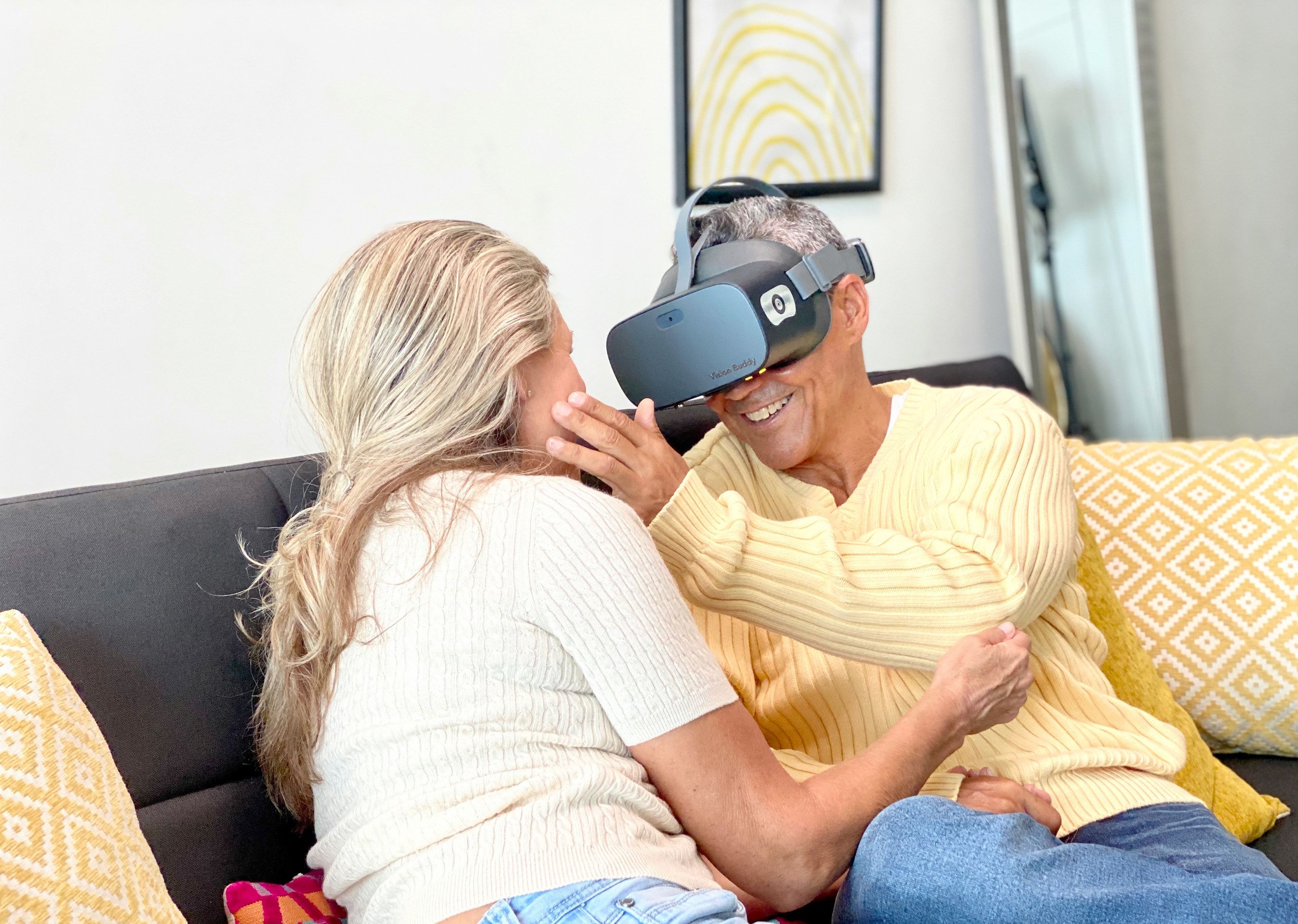Article
Headset offering visually impaired patients a chance at sight
Author(s):
Vision Buddy is offering a headset that features modes for TV/movie streaming, magnification, and reading, helping the visually impaired improve their quality of life.
The Vision Buddy headset allows visually impaired patients to see the faces of their loved ones. (Image courtesy of Vision Buddy)

Silicon Valley, California-based Vision Buddy is helping the visually impaired improve their quality of life.
The company produces a headset designed with three modes for TV/movie streaming, magnification, and reading.
According to the company, it is now offering two companion products to make the headset an all-in-one assistive device. With the V.3 update, the Computer Link now allows the user to view their desktop from within the headset with no delay while the CCTV Mini improves on previous reading capabilities as a stationary compact CCTV camera.
The company noted that the device has been developed with the user in mind, making it an option for many patients trying to regain some measure of independence while living with visual impairments.
Caleb Griffiths, 23, lived with visual impairment his entire life, having been diagnosed at 6 months old with familial exudative vitreoretinopathy. He lost all of the sight in his left eye by the age of 3, and was later declared legally blind.
Amid a host of obstacles, Griffiths cleared began to clear hurdles through his passion for hockey which eventually led him to play for the U.S. Blind Hockey Team.
Even though he was a hockey player, Griffiths wasn’t able to watch the sport he loved. The device from Vision Buddy offered a potential solution.
“The first day that I had it, I noticed differences and knew it was going to make an impact in my life,” he said in a statement.
This device is a concept turned into reality by Vision Buddy co-CEO Zarak Afridi, Co-CEO Abdul Zalil, and Chief Technology Officer D. Emmanuel Feinsmith.
According to the company, it has partnered with the Canadian National Institute for the Blind (CNIB), U.S. Veteran Affairs, and Vision Australia among a nationwide network of dealers including some of the top low vision optometrists in the country.
This assistive device continues to help the low vision community worldwide dealing with various eye conditions such as macular degeneration, retinitis, glaucoma, Stargardt disease, and other visual diseases.
Newsletter
Don’t miss out—get Ophthalmology Times updates on the latest clinical advancements and expert interviews, straight to your inbox.




